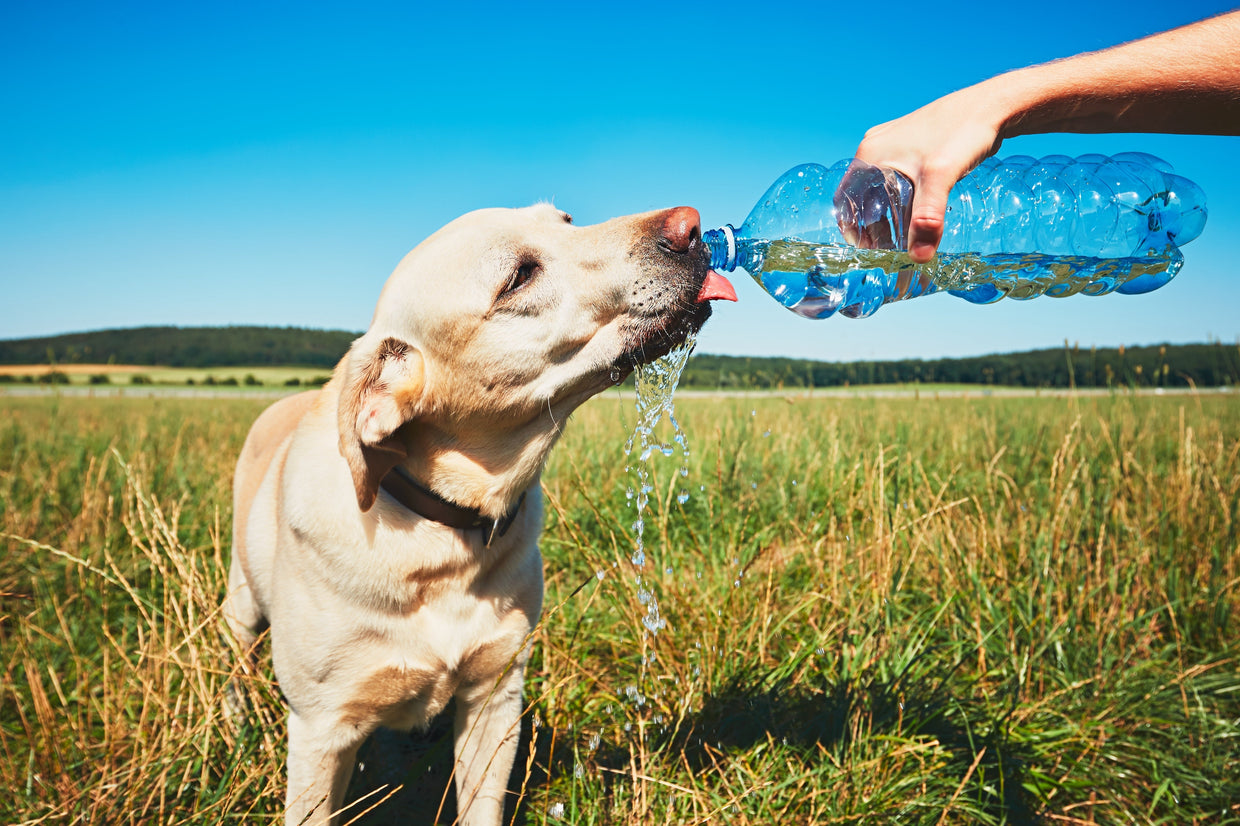

Heat Stroke In Dogs
Can you spot the signs of heat stroke in dogs? With the arrival of the summer months, body temperatures can also rise – both ours, and our pets’.
Dogs don’t tolerate high temperatures as well as humans, though. With sweat glands only in their feet and around their noses, they’re simply less efficient at cooling themselves down than we are. Sadly, this makes them more susceptible to heat stroke.
Heat stroke happens when your pet is too hot and is unable to reduce their body temperature to cool themselves down. Heat stroke can be fatal, so it’s essential to act quickly if you notice your dog displaying any of the tell-tale signs.
In this guide, we explain what heat stroke is, signs of heat stroke in dogs, and what to do if you think your pet has heat stroke.

About heat stroke and heat exhaustion in dogs
Heat exhaustion occurs when the body gets too hot. It can result in a fever or even unconsciousness. Heat exhaustion can affect anyone – or any dog – exposed to high temperatures, particularly when working or exercising.
Heat stroke occurs when heat exhaustion has gone on for some time, and isn't resolving.. While heat exhaustion isn’t always serious, heat stroke can be life-threatening.
Generally speaking, if a pet's body temperature exceeds around 39.4°C, it is considered abnormal or hyperthermic.
What is heat stroke in dogs
Just like humans, dogs can experience heat exhaustion and heat stroke. There are two types of heat stroke – exertional and non-exertional.
Exertional heat stroke is caused by an increase in the body’s temperature during physical activity, and is more likely to occur during hot weather conditions when the dog hasn’t had a chance to acclimatise to the sudden change in temperature.
Non-exertional heat stroke occurs when a dog is exposed to high temperatures separate to exercise. Often due to not having access to proper ventilation or drinking water. This means they are unable to regulate their own temperature and keep themselves cool. This type of heat stroke typically occurs in a garden with no shade, in rooms without adequate ventilation, or in parked cars.

Signs of heat stroke in dogs
Although any dog – or human, for that matter – is susceptible to heat stroke, there are some breeds of dogs which are more prone to heat exhaustion and heat stroke. According to the RSPCA, ageing dogs or very young pups, dogs with thick, heavy coats, and dogs with flat faces, are all more susceptible to heat stroke.
If your dog is exhibiting any of the following warning signs or behaviours, they could be experiencing heat stroke:
- Barking, whining, or signs of agitation
- Excessive drooling
- Faster, heavier panting
- Glazed-over eyes
- Increase in body temperature
- Increased pulse and heartbeat
- Staggering, weakness, or collapse
- Unconsciousness
What to do if your pet has heat stroke
Heat stroke can kill, so it’s essential to act fast if your dog is displaying any of the warning signs.
If you suspect your dog may have heat stroke, you should:
- Call your vet and follow any instructions – they may recommend cooling your pet before travel
- Move them into a shaded or cool area immediately
- Douse them with cool water
- Try to position wet towels beneath them, if possible, to speed up the cooling down process – and regularly check and replace the towels when they’re no longer cool and wet
- Encourage your dog to drink small amounts of water
- Take your dog to the nearest vet as a matter of urgency once their temperature has regulated
Keeping your dog safe, cool, and well-hydrated during the hot summer months is absolutely essential. In addition to keeping them hydrated, consider giving them YuMOVE Calming Care for Dogs if they appear agitated by the hustle and bustle of the season.




